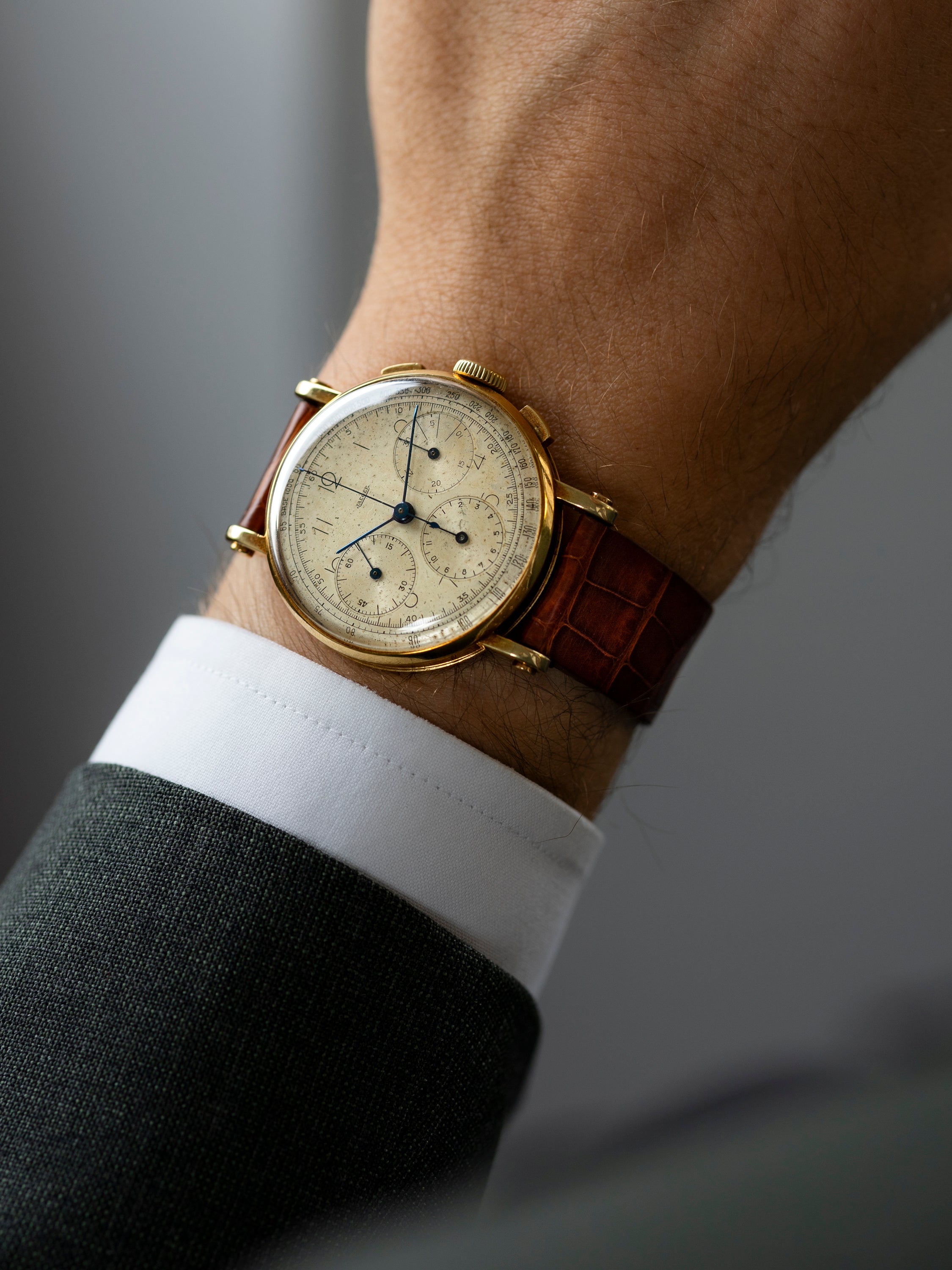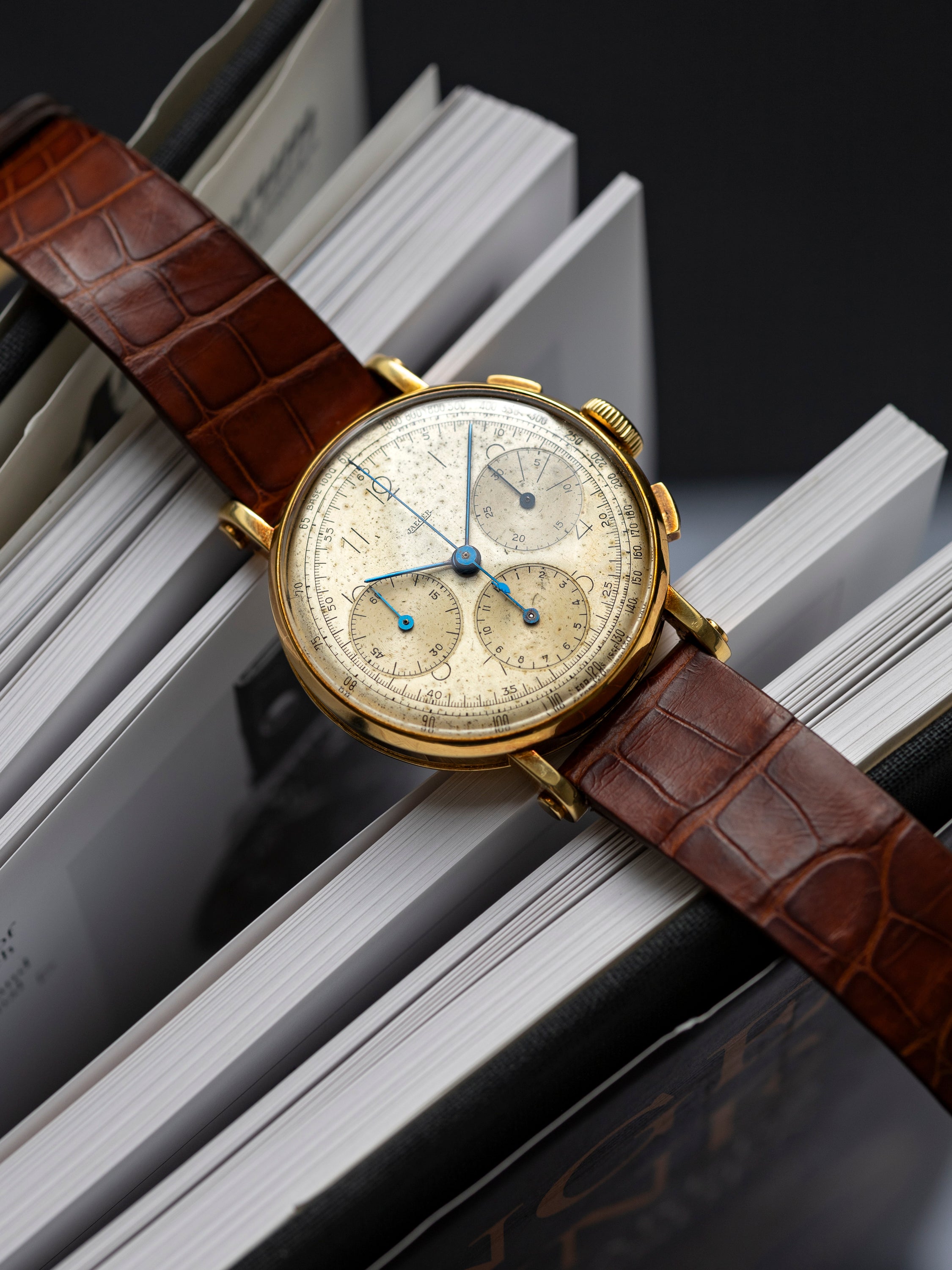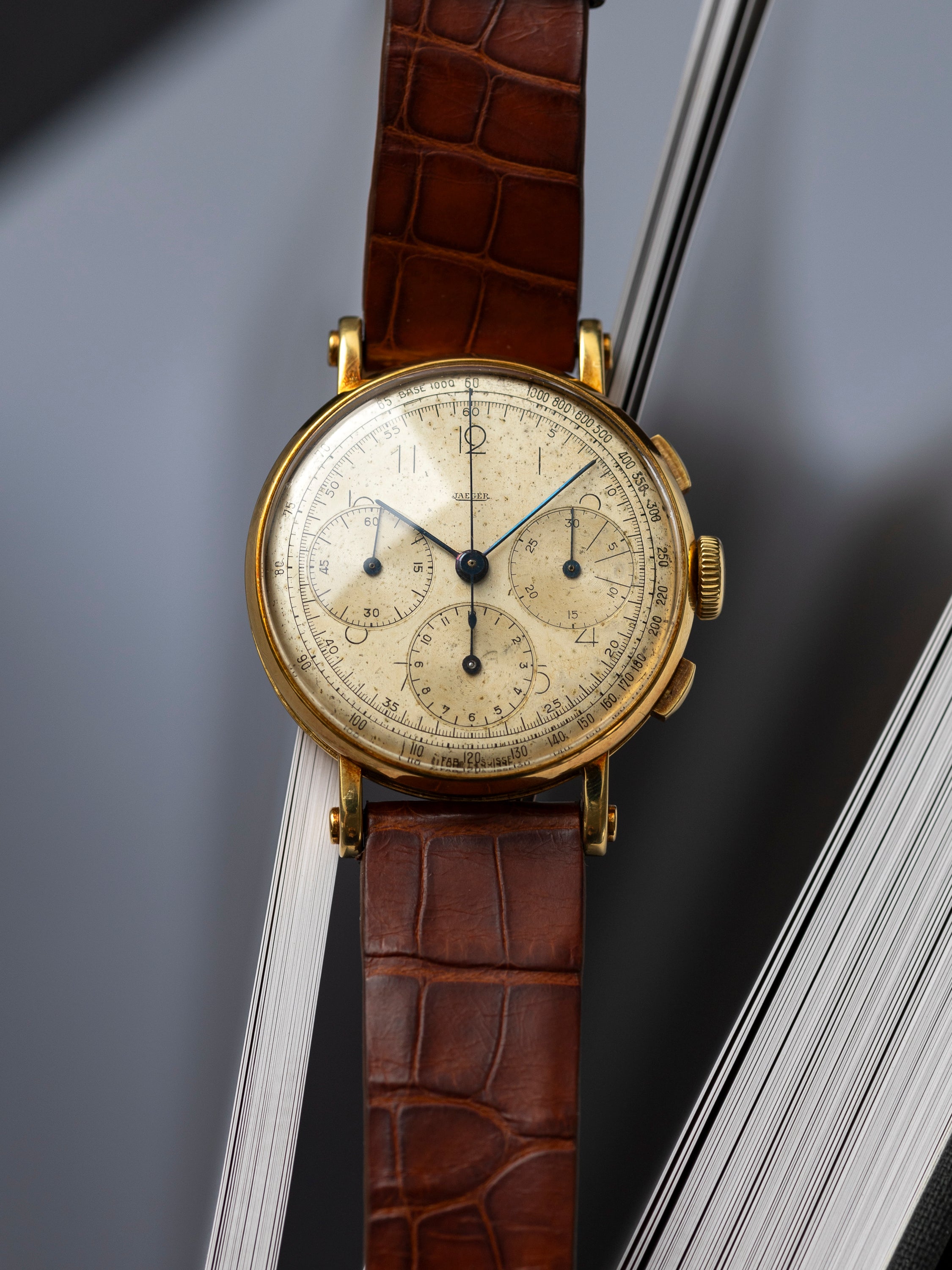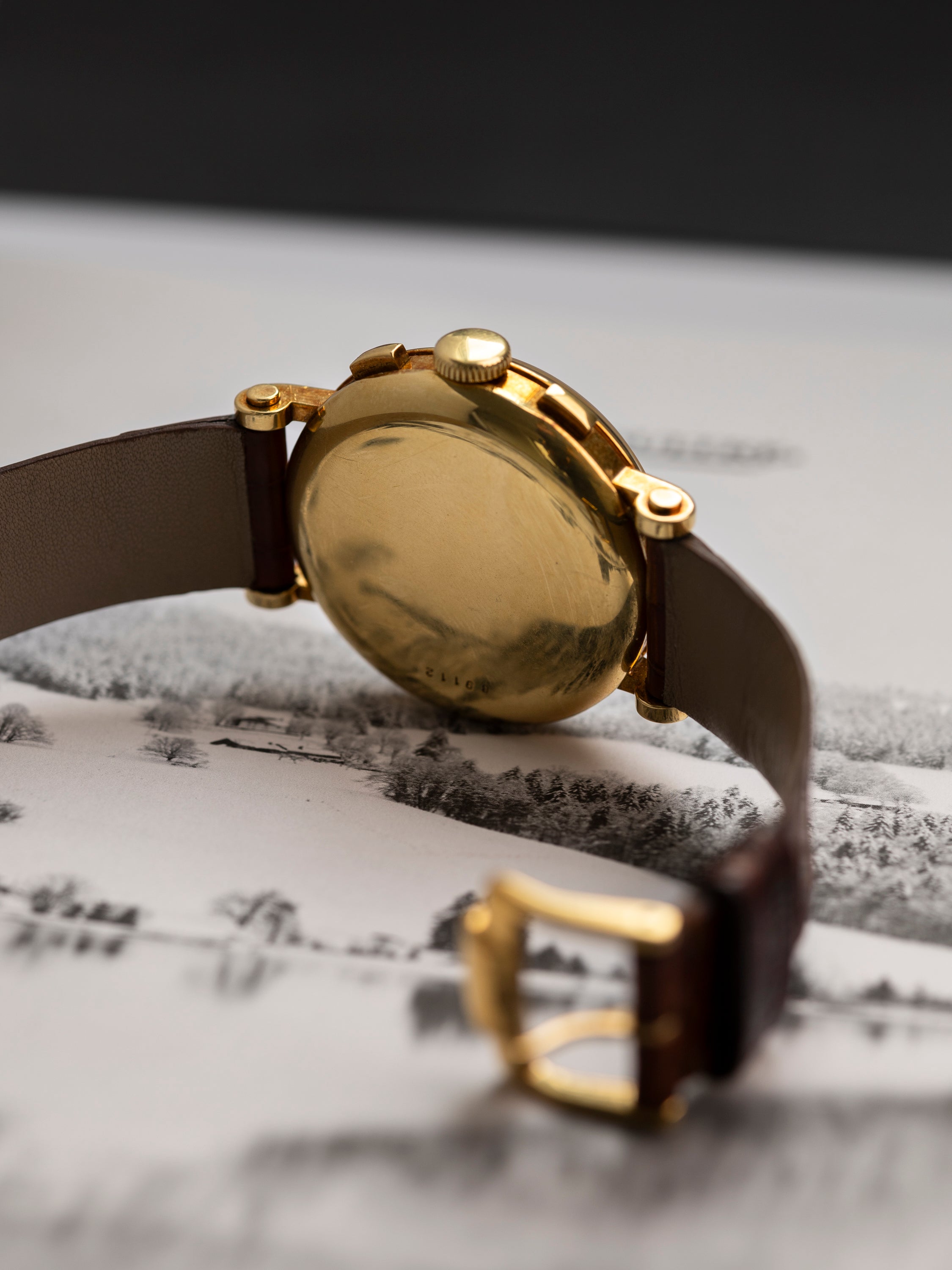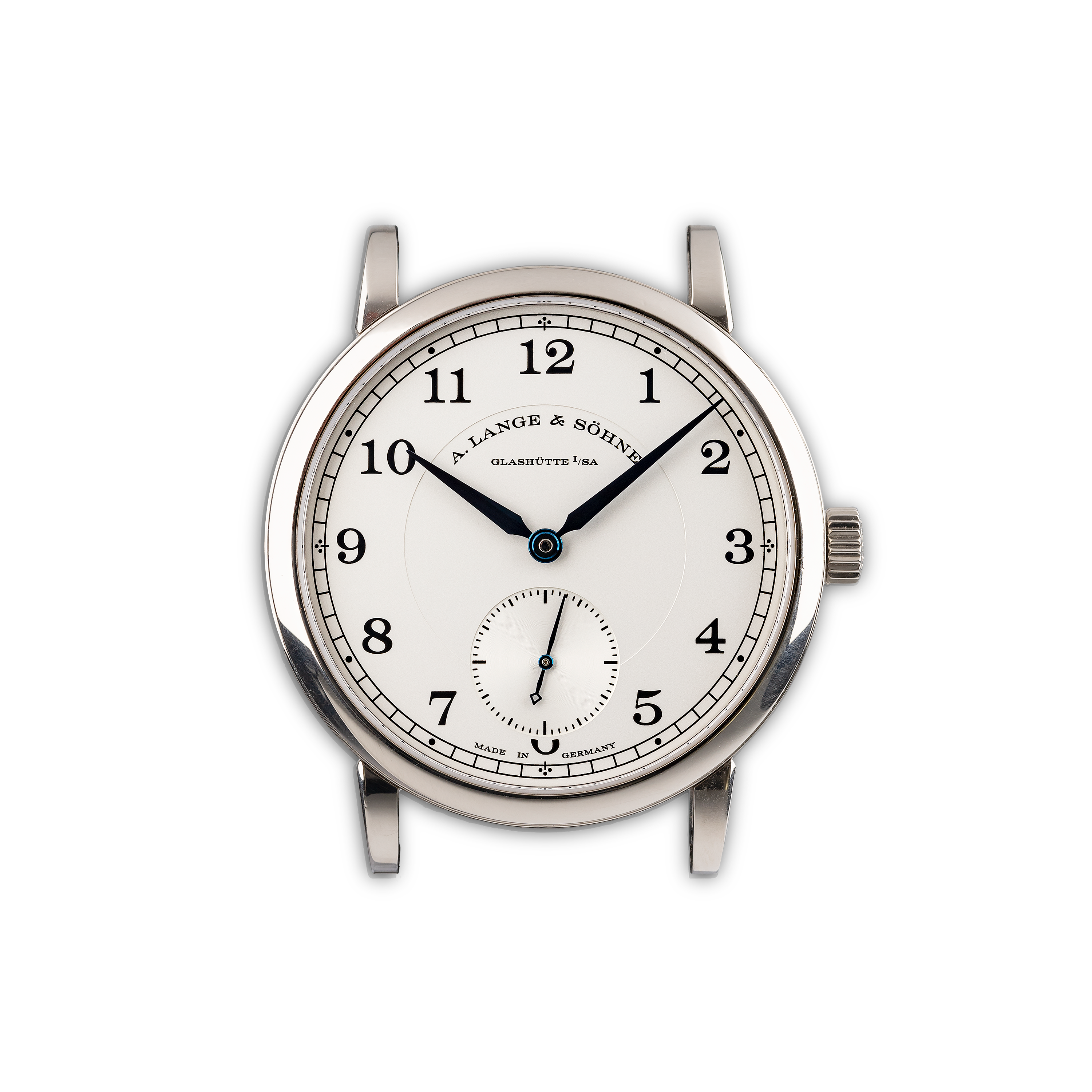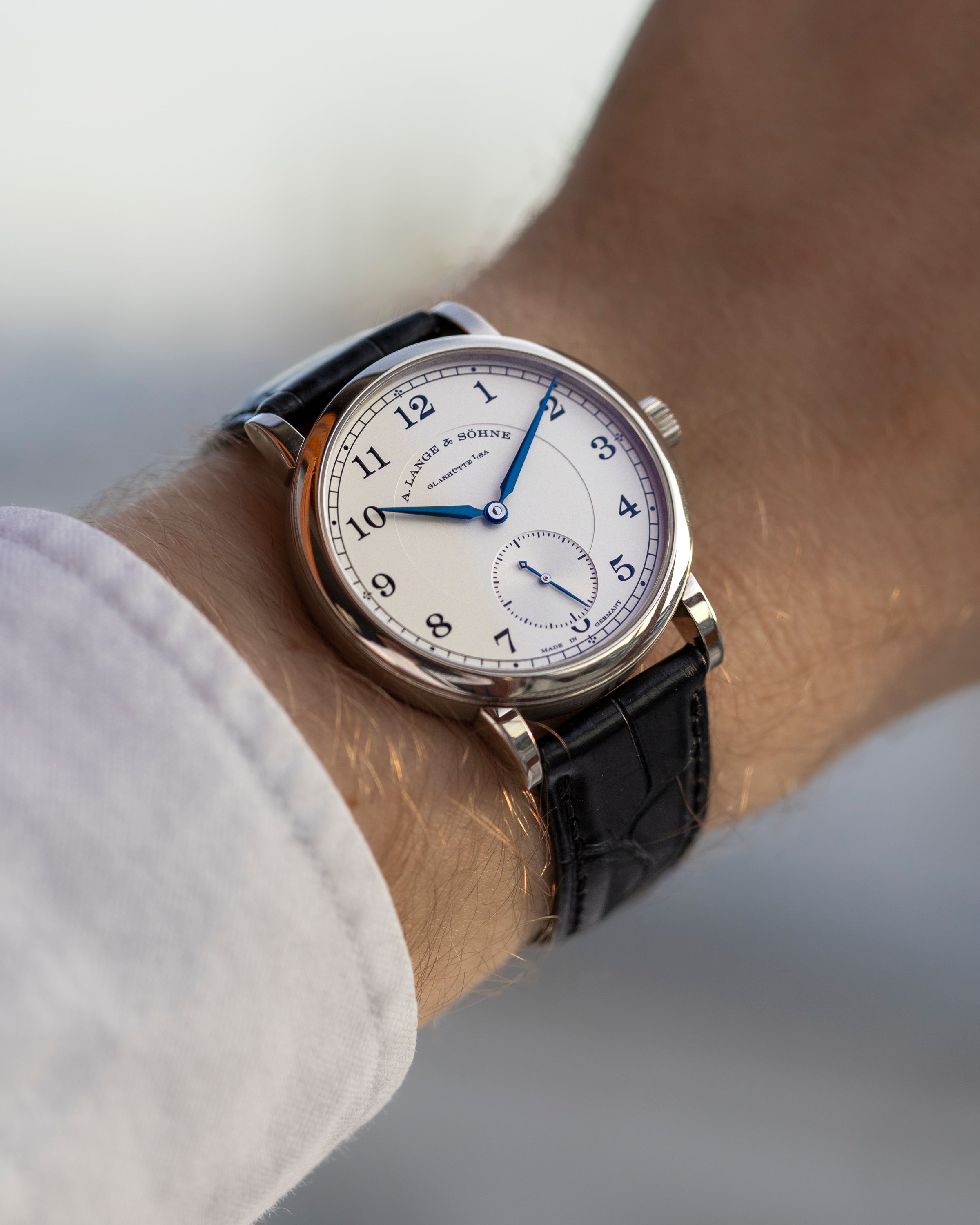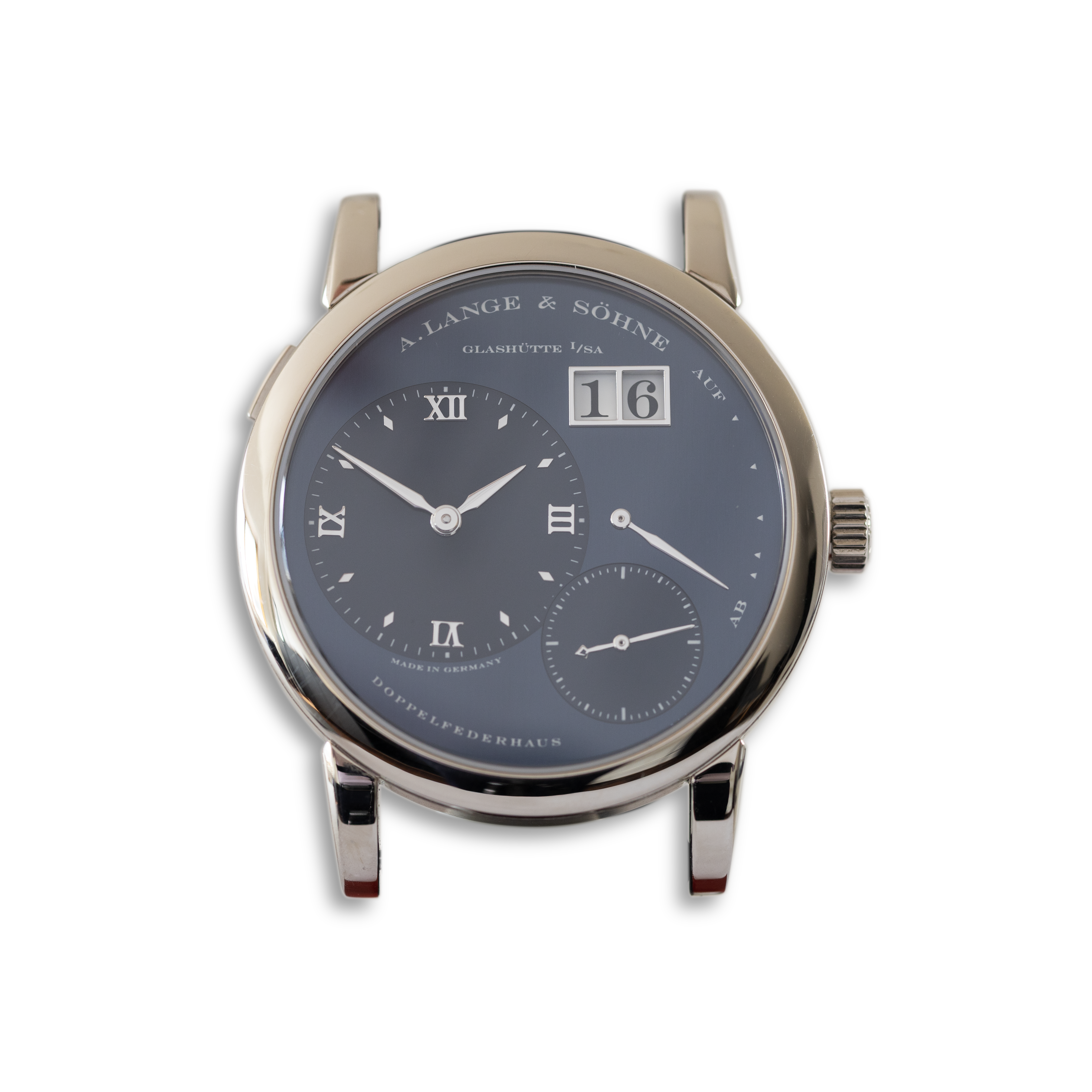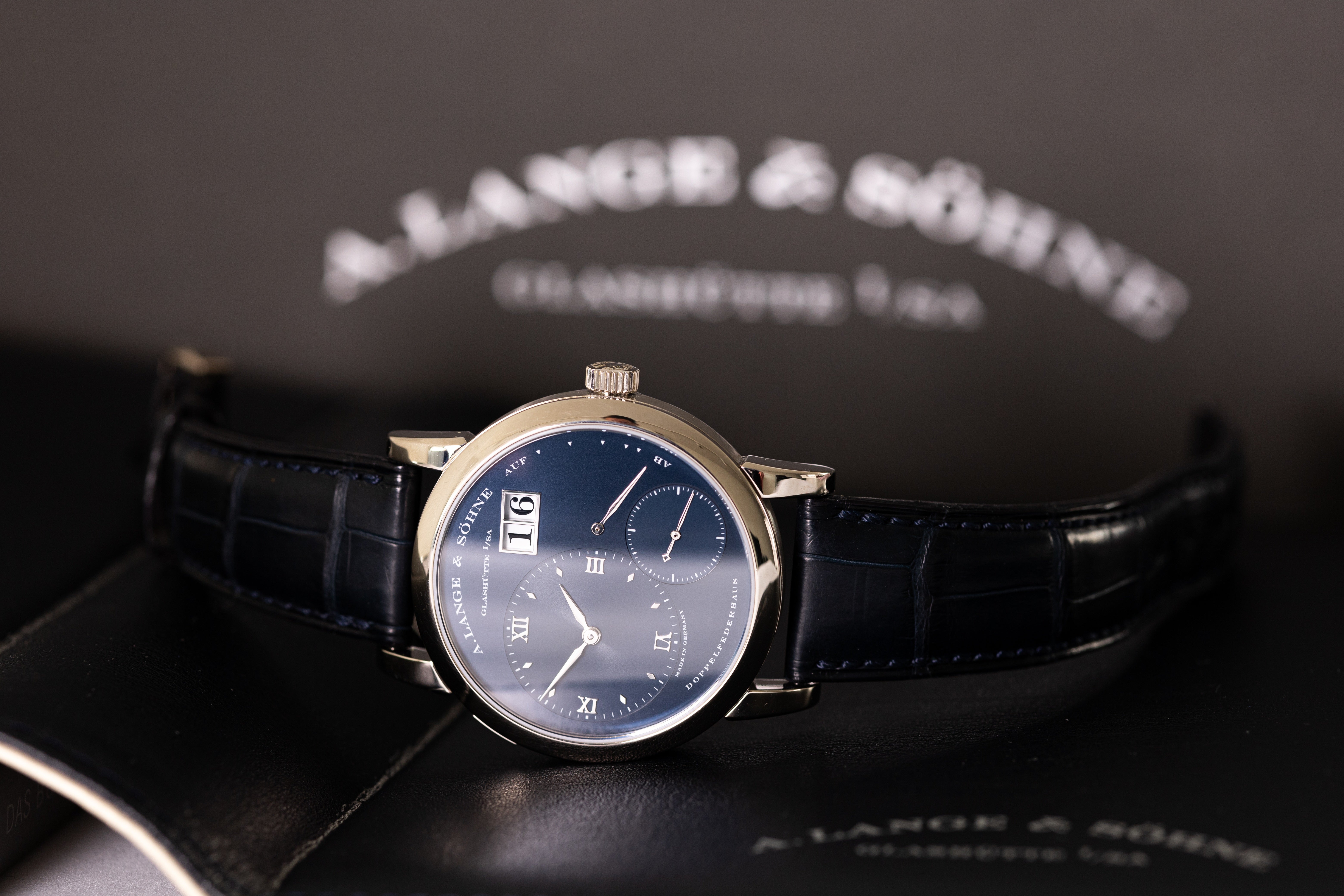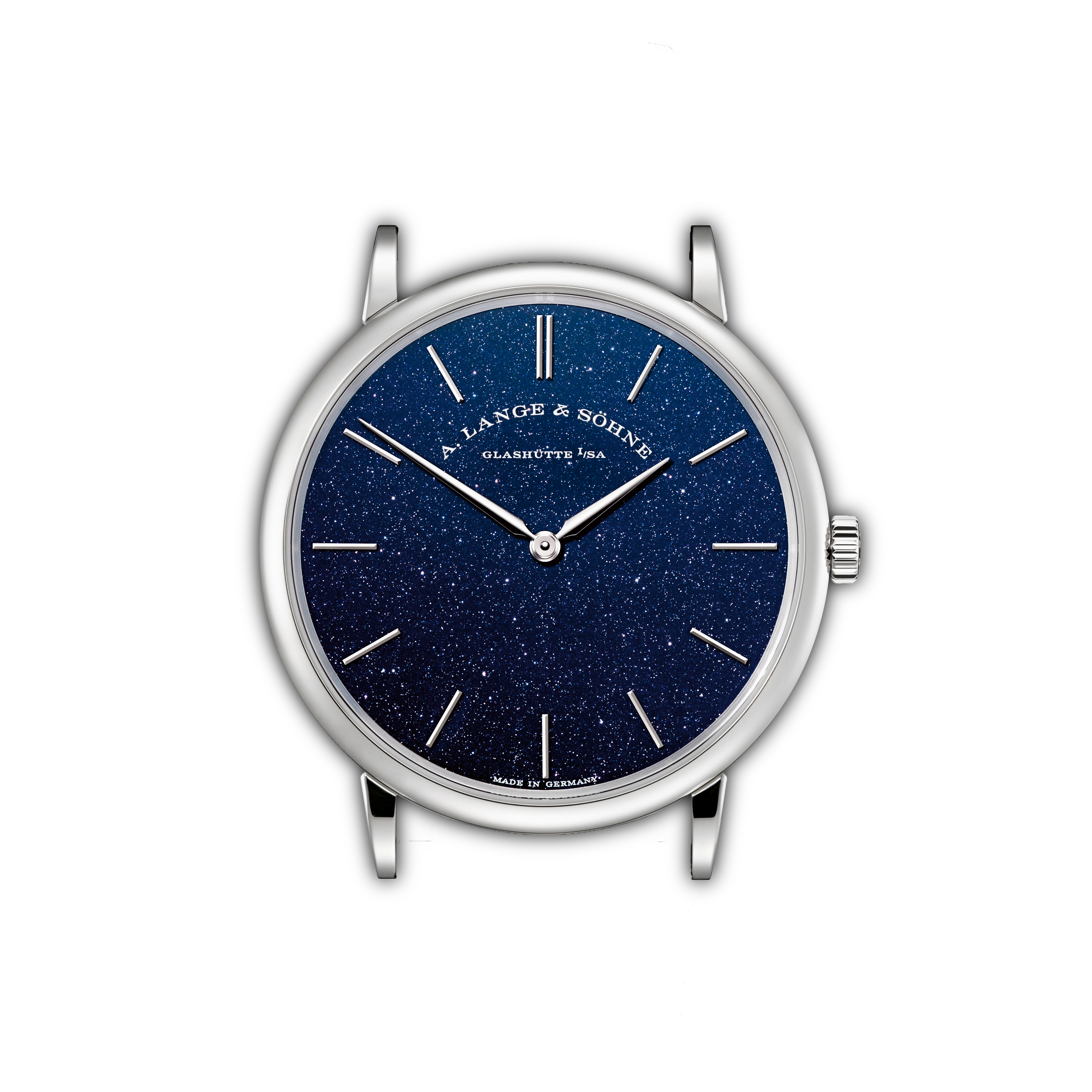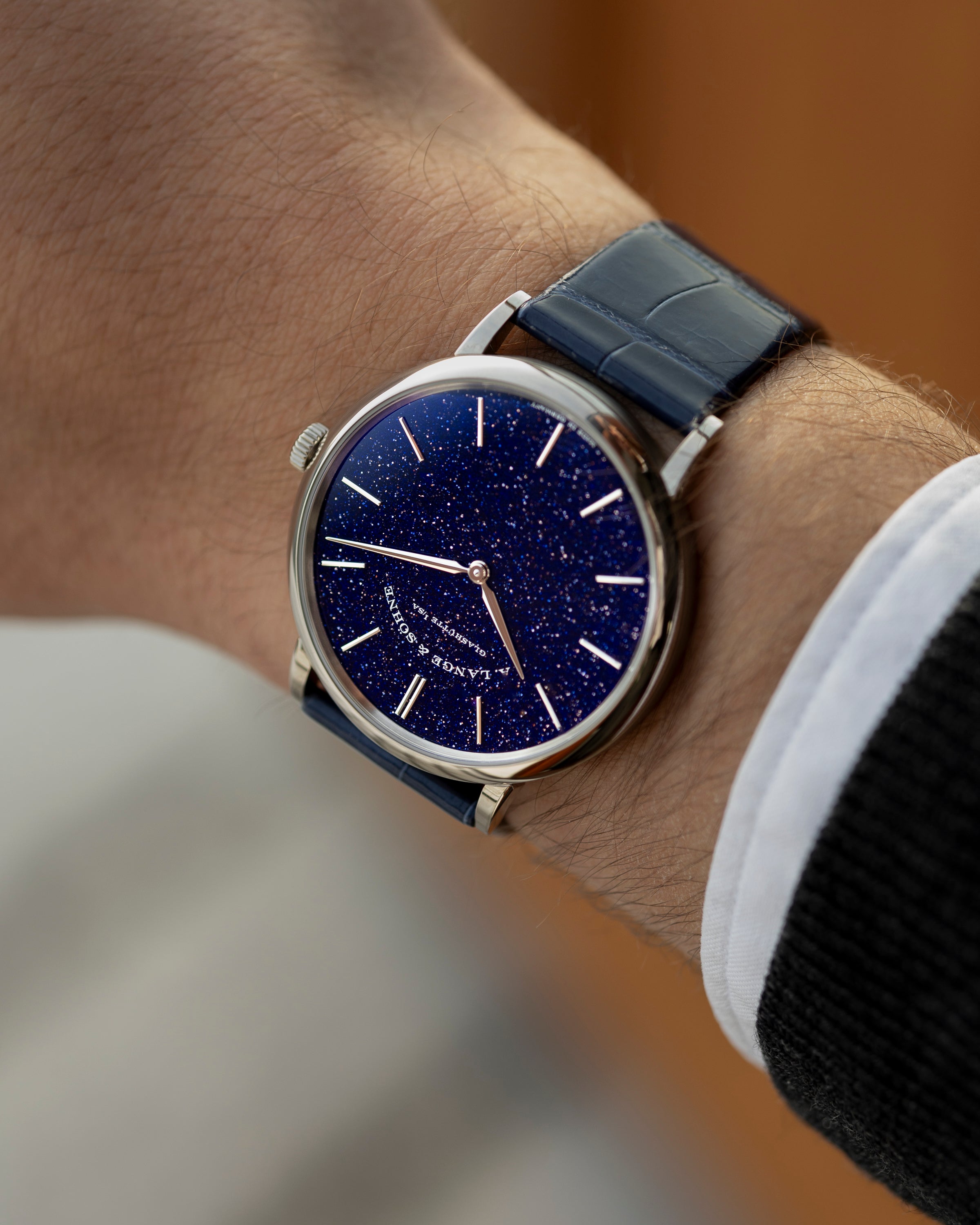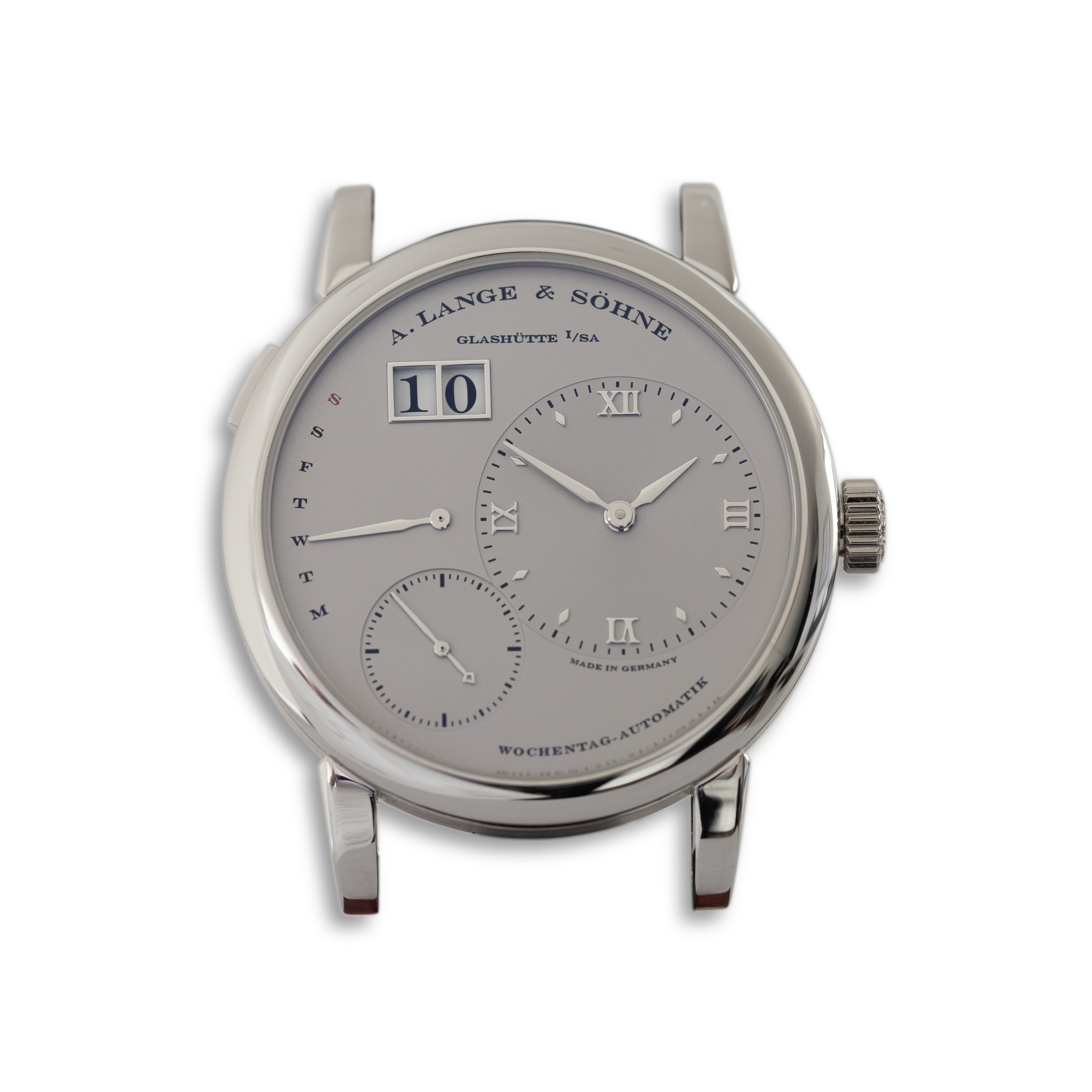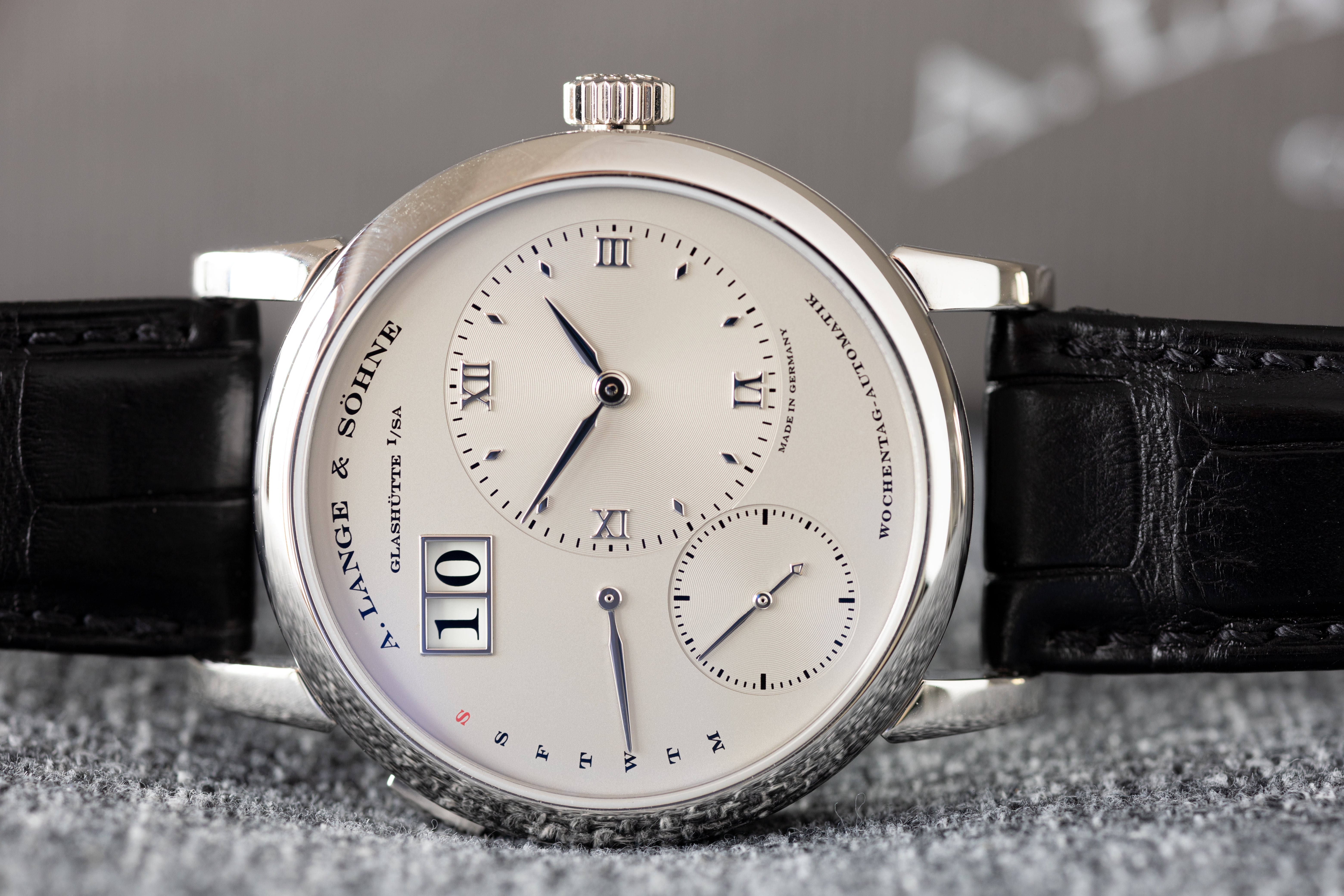Jaeger-LeCoultre Vintage Jumbo Chronograph
Known for being one the most important Swiss movement manufacturers of all time, with pioneer Antoine LeCoultre in the front, Jaeger-LeCoultre has been creating jaw dropping watches for nearly two centuries. One of those watches is this golden “jumbo” chronograph from the early 1950s., meticulously crafted in an 18ct yellow gold case with an Officers case design, taking architecture from pocket watches. The manual wind chronograph movement is based on the Universal Geneve cal. 287 with a column wheel, also found in their collectable Tri-Compax watches. The watch was originally made for the French market, hence the dial only signed “Jaeger”, making it further rare.
Case: 18ct Yellow Gold
Movement: Manual Winding
Strap: Leather
Diameter: 37mm
Height: 12.5mm
Water resistance: None
Year: 1950s
Accessories:
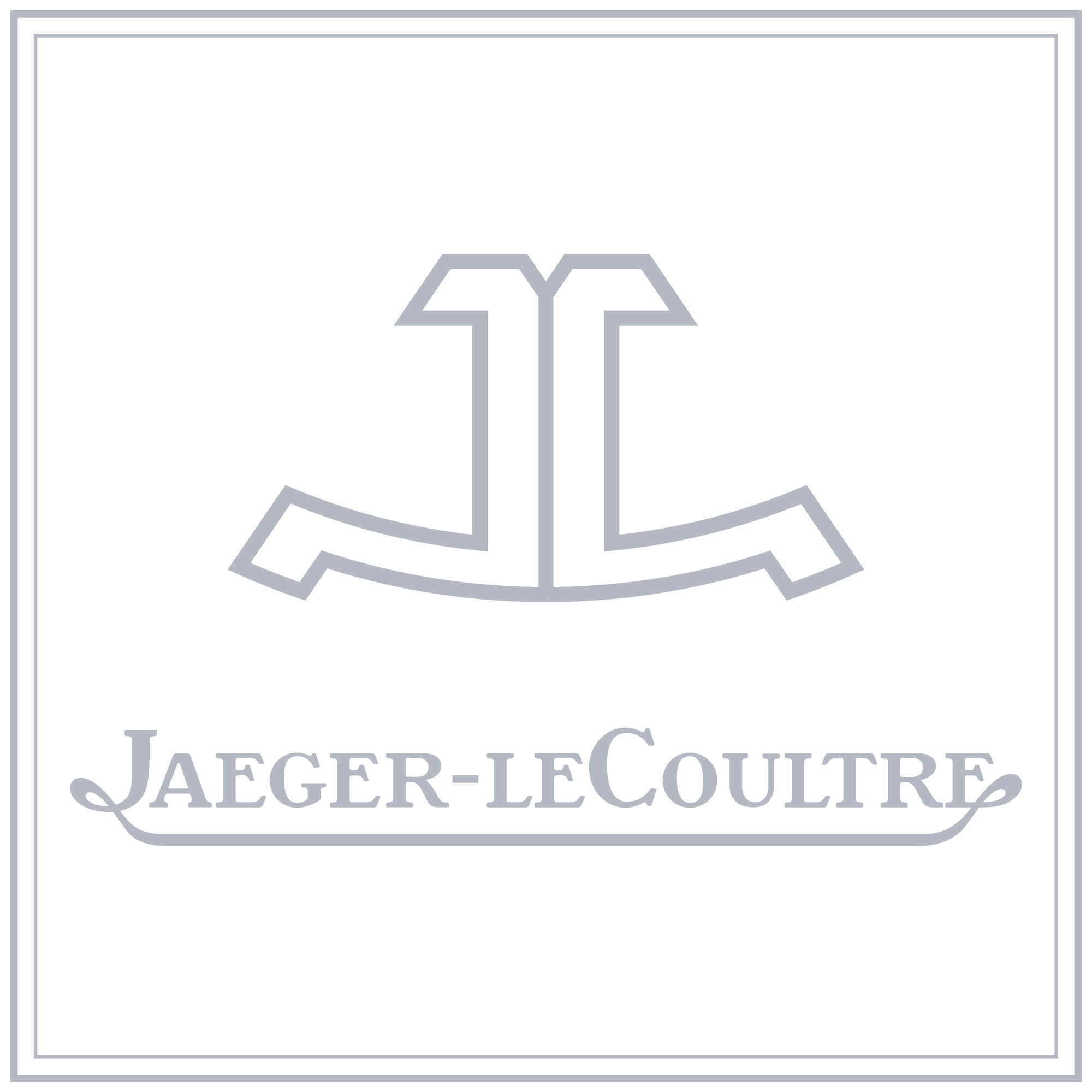
Our Values
The Ole Mathiesen values are born from the Scandinavian virtues of modernism which focus on functionalism and simplification of form. The purpose is to improve the daily life to create harmony and affordable pleasure inspired by durability functionality and reliability - as well as less tangible values such as simplicity and equality. The values in an Ole Mathiesen watch are discrete classic timely as well as timeless - never ostentatious.
Our Focus
Ole Mathiesen applies the Danish design principles of simplicity, quality and focus to one of our most precious assets: time. The simplicity of the Ole Mathiesen watch calls for the ability to focus on what matters. And in the design process the watchmakers ask themselves: How can we design to last a century rather than a season? Always with the focus: the design is not finished when there is nothing left to add but rather when there is nothing left to remove.
Our Trademark
The unmistakable trademarks of Ole Mathiesen’s design are indebted to the three concepts on which his watch design was based – honesty tradition and quality. The design of Ole Mathiesen’s classic watch from 1962 builds on the design tradition that has its roots in functionalism and it represents the very essence of a timekeeping instrument being both timeless as well as timely offering a harmonious interaction between the watch and the wearer.





